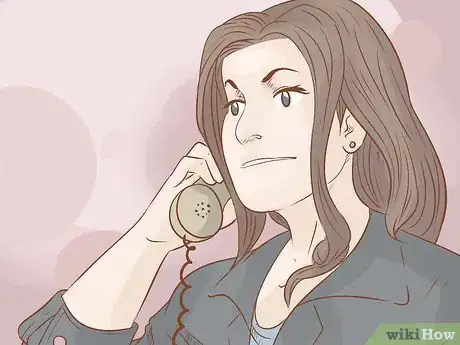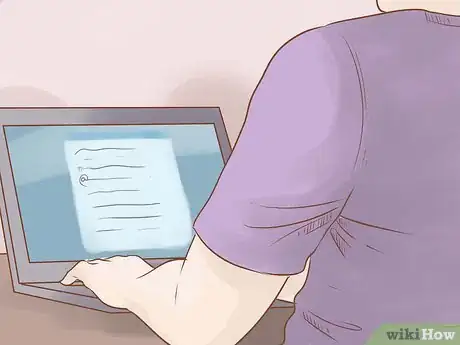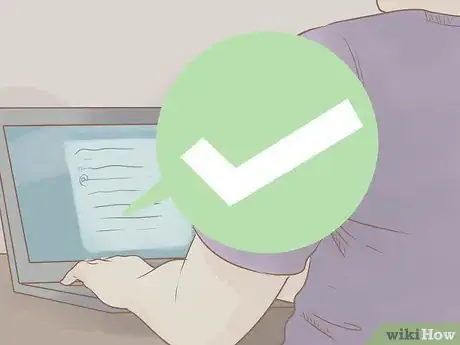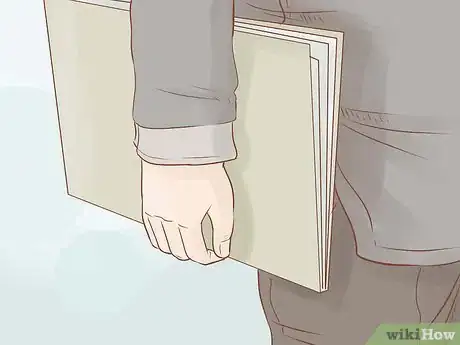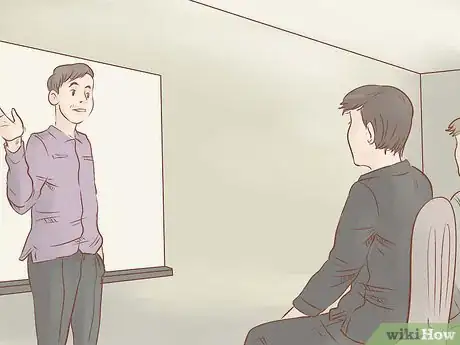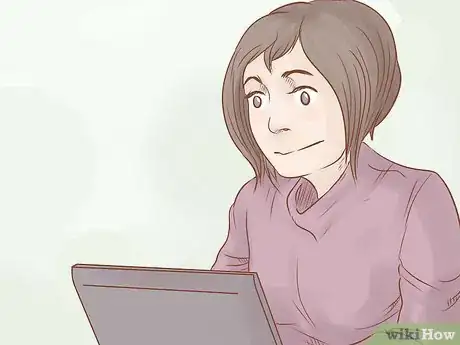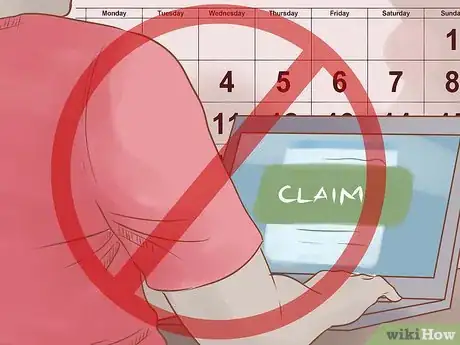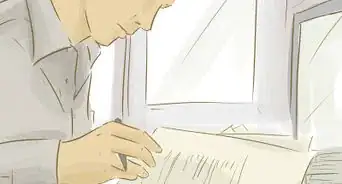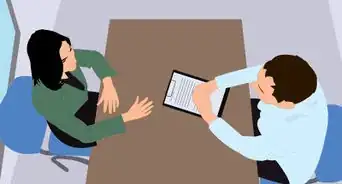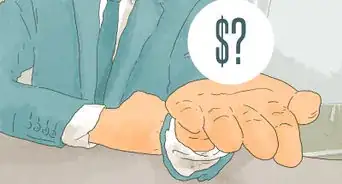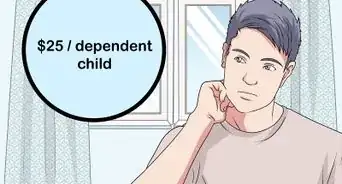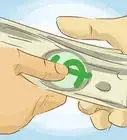wikiHow is a “wiki,” similar to Wikipedia, which means that many of our articles are co-written by multiple authors. To create this article, 12 people, some anonymous, worked to edit and improve it over time.
There are 8 references cited in this article, which can be found at the bottom of the page.
This article has been viewed 178,042 times.
Learn more...
Unemployment insurance (UI) provides displaced workers with temporary financial aid while they look for a new job. UI benefits are administered by individual states under the Federal-State Unemployment Insurance Program. Workers must meet specific guidelines set forth by the state before they can receive unemployment benefits. If you need to apply for unemployment benefits, follow these steps.
Steps
-
1Contact your state Employment Development Agency. The agency that administers unemployment compensation in your state is the ultimate authority on all UI matters. Before applying, determine whether you meet the minimum requirements to qualify for benefits. These restrictions include:[1]
- You must have left your last job through no fault of your own. If you quit your job or were fired for cause, you may not be granted UI benefits.
- Acceptable reasons for leaving include: firings, layoffs, downsizing (reduction in workforce), quitting because of harassment or significant family reasons.[2]
- Reasons that may not allow you to get UI benefits include: quitting because you didn't like your job, quitting because you were going to change careers, and getting fired because of performance lapses or serious protocol breaches.
- You must meet state "base period" requirements, which ultimately determine the amount and duration of your UI payments. This is usually computed by examining your earnings over the last 12 months you worked, and then applying a formula to figure out your UI benefit.
- You must have left your last job through no fault of your own. If you quit your job or were fired for cause, you may not be granted UI benefits.
-
2Apply for UI benefits. People seeking unemployment benefits can apply online, over the phone, or by mail or fax. All states require applicants to provide detailed work and personal information. Some of the data you will be asked to provide may include:[3]
- Full name.
- Current address.
- Social Security number.
- Driver's license number, or state identification number.
- Last date you worked.
- Last employer information, including complete address and phone number.
- Information on all employers you worked for in 18 months before you filed your claim, including length of employment and amount of wages.
- Reason why you're no longer employed. Under certain circumstances, you may not be eligible to receive UI benefits.
- Any payments you expect to receive from a former employer (such as accrued vacation time). This can affect the amount of your benefit.
- Whether you're currently available and willing to accept work.
Advertisement -
3Complete the UI application process. You can expect a ruling on your application within 10 business days. If there are any questions about your application, you may be contacted by a representative from your state Employment Development Agency to resolve any issues.
- Expect a simple phone interview before the ruling on your application is delivered. The phone interview consists of basic questions about your previous employment, along with follow-up questions about your application.
-
4Appeal the ruling, if necessary. File an appeal within 10 to 30 days of the ruling, depending on the state. (Check your state's requirements to be absolutely sure.) You'll be able to present evidence that your claim should have been granted. Your former employers will be given a chance to attend and present evidence as well.
- You may bring evidence or witnesses to the appeal hearing to support your claim. If you claim that your former employers misrepresented your earnings, you may bring in pay stubs to support your claim. You may also bring in witnesses (a coworker perhaps) who can corroborate that you left your former employers because of ongoing sexual harassment instead of quitting.
- A judge will hear the evidence and issue a ruling. If you are granted unemployment benefits after the review, your employer has the option to appeal one more time. If you are not granted unemployment benefits after the review, you usually have the option of appealing one more time.
-
5Attend the One-Stop/Employment Service Office appointment when scheduled. The appointment is required in order to receive benefits. Workshops are conducted by trained personnel and are designed to help unemployed workers evaluate their own skills and explore opportunities in other industries. The service can also provide job training and counseling.
-
6Fill out your biweekly continued UI claim form. After your UI application has been accepted and processed, you will begin to receive biweekly benefits checks. Fill in your UI claim form to the extent indicated, and mail them on the date specified. Any variance from the mail-in date can affect claim processing.
- You may work part-time and still collect UI benefits, as long as you declare your earnings and continue to look for work. Report your gross earnings as you earn them, not when you are paid. By law, you are allowed to earn up to 1/3 of your weekly benefit rate before deductions apply.
- Any supplemental income in excess of 1/3 of your weekly benefit rate is subtracted from your weekly benefit rate until the number hits $0. For example, if your weekly benefit rate was $325, and you earned $150 in supplemental income for the week, any income above $108 is subtracted from your weekly benefits. This means that you would receive $283 in unemployment benefits, along with the $150 in supplemental income.
-
7Keep up with your job search. You are required to make job contacts every week you are drawing UI benefits. Failure to look for work can result in the suspension or denial of further benefits. Acceptable reasons for not accepting work include:[4]
- The job does not fit with your prior experience or career trajectory.
- The job forces you to join a labor union.
- The job is unusually dangerous.
- The wages offered are substantially below the norm for that job.
- The job would offend your religious or spiritual sensibilities.
-
8To stop collecting unemployment, simply stop filing weekly claims. You don't need to fill out any additional paperwork if you receive a full-time offer or decide that you would rather not receive benefits. Just stop filing the claims.
- If you are out of work again by the end of the year, contact the state Employment Development Agency and reapply. Your application will be much shorter if you've applied in the recent past.
Community Q&A
-
QuestionWhat are the eligibility requirements for unemployment benefits?
 Community AnswerGo to your State's Employment website. Look for link "file for unemployment." You can give all the information there. They will then contact you for more information and/or questions.
Community AnswerGo to your State's Employment website. Look for link "file for unemployment." You can give all the information there. They will then contact you for more information and/or questions. -
QuestionI work 56 hours a pay period, but am cancelled at least 10 hours or more, do I qualify?
 Community AnswerNo. if you were hired full time, a minimum of 32 hrs per week and all employees of the company have their hours cut below 20 per week then you can only apply for reduced wage benefits.
Community AnswerNo. if you were hired full time, a minimum of 32 hrs per week and all employees of the company have their hours cut below 20 per week then you can only apply for reduced wage benefits. -
QuestionI was denied unemployment. I was harassed by the management,and I filed a claim with the EEOC. I was still denied after 2 appeals,even though my safety was threatened. That was almost a year ago. I still have not found a job. Am I eligible to file again?
 Community AnswerYes. Be assertive. File again and continue to stand up for yourself. Keep documentation of everything. If you don't like what someone is telling you, ask to speak to a supervisor and keep calling until somebody listens to you.
Community AnswerYes. Be assertive. File again and continue to stand up for yourself. Keep documentation of everything. If you don't like what someone is telling you, ask to speak to a supervisor and keep calling until somebody listens to you.
References
- ↑ https://www.mass.gov/service-details/check-eligibility-for-unemployment-benefits
- ↑ https://www.nolo.com/legal-encyclopedia/unemployment-benefits-when-quit-32450.html
- ↑ https://www.mass.gov/how-to/apply-for-unemployment-benefits
- ↑ https://www.mass.gov/info-details/what-affects-your-weekly-unemployment-benefits
- http://workforcesecurity.doleta.gov/unemploy/uifactsheet.asp
- http://www.edd.ca.gov/Unemployment/Before_you_Start.htm
- http://money.cnn.com/2008/03/10/pf/saving/toptips/index.htm
- http://www.nolo.com/legal-encyclopedia/collecting-unemployment-benefits-california-32504.html
